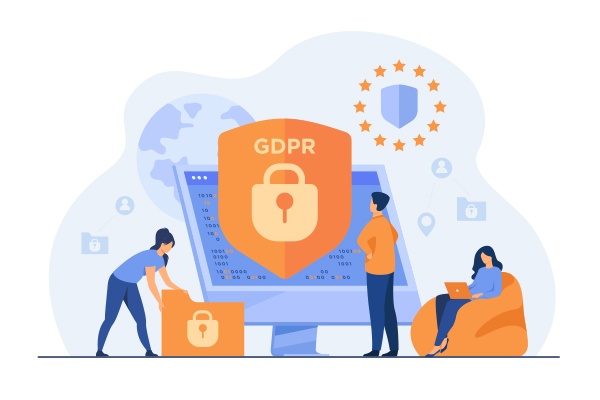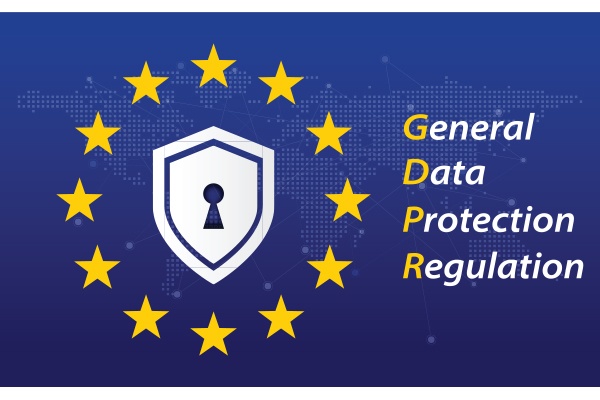
All you Need to Know about GDPR and Data Protection
What does GDPR Compliance Mean and why is it Significant?
The General Data Protection Regulation (GDPR) is a regulation by the European Union that aims to protect the data of people in the EU. The GDPR offers greater control over personal data and provides a more uniform approach to data protection throughout the region. As the world continues to become more digital, data security is increasingly important and the GDPR provides much needed protection to EU citizens. It is also important to note that the GDPR applies to all businesses that interact with EU citizens, regardless of the business’s physical presence in the EU. This means that businesses outside the EU must also adhere to the GDPR regulations in order to stay compliant. In this blog post, we will explore the implications of the GDPR, how it affects businesses, and what companies should do to ensure compliance.
1. Overview of the GDPR
The General Data Protection Regulation (GDPR) is a set of laws passed by the European Union (EU) to protect the privacy and personal data of individuals within the EU. It was adopted in April 2016 and went into effect on May 25th, 2018. The GDPR applies to any organization in the world that processes the personal data of EU citizens. The GDPR applies to any processing of personal data, including data collection, storage, and use. It sets out the rights of individuals with regard to their personal data, and the obligations of organizations that process this data. Organizations must ensure compliance with the GDPR or face severe financial penalties.
2. Key Principles of GDPR
The General Data Protection Regulation (GDPR) sets out two key principles that organizations must abide by in order to ensure that personal data is being handled in a secure and responsible manner. The first principle is that individuals have the right to access, rectify, and erase personal data held by organizations. This means that individuals are entitled to request a copy of any personal data held by an organization, to have any inaccurate or incomplete data corrected or erased, and to know the purpose for which their data is being processed. The second principle is that organizations must take appropriate technical and organizational measures to ensure that personal data is handled securely and in accordance with the GDPR. This includes implementing security measures to protect personal data from unauthorized access, use, or disclosure.
3. Key Terms of GDPR
The General Data Protection Regulation (GDPR) is an essential part of the European Union’s data privacy laws, and it’s important to understand the key terms of the regulation. Key terms of the GDPR include:
1. Data Subject – Refers to any individual whose personal data is collected and processed.
2. Data Controller – The entity that determines the purposes and means of processing personal data.
3. Data Processor – The entity which processes personal data on behalf of the data controller.
By understanding these key terms, organizations can ensure that they are in compliance with the GDPR and that they are protecting the data of their customers.
4. Rights of Individuals Under GDPR
Under the General Data Protection Regulation (GDPR), individuals have the right to access their personal data, the right to rectification, the right to erasure, the right to restriction of processing, the right to object to processing, the right to data portability, the right to withdraw consent, and the right to lodge a complaint with the relevant supervisory authority. Individuals also have the right to be informed if their personal data is being collected, used and/or processed, and the right to be informed of the purpose of the processing. These rights are intended to protect individuals’ personal data and privacy and to ensure that their personal data is used in a fair and transparent manner.
5. Data Breach Notification Guidelines
Article 5 of the General Data Protection Regulation (GDPR) requires organizations to notify the appropriate authorities of any data breaches they become aware of. The GDPR also outlines the basic requirements for how organizations should handle such notifications. All notifications must be made without undue delay, in a clear and detailed manner, and must include information on the nature of the breach, the data and categories of data that have been affected, and any measures taken or proposed to be taken in response to the breach. Organizations should also ensure that the notification process is documented for future reference.
6. Penalties for Non-Compliance of General Data Protection Regulation
Article 6 of the General Data Protection Regulation outlines the penalties for non-compliance with the GDPR. These penalties are severe, reaching up to €20 million or up to 4% of the total worldwide annual turnover of the preceding financial year, whichever is higher. In addition to the financial penalties, organizations may also face administrative fines, legal proceedings, and other sanctions. Organizations must ensure that they comply with the GDPR at all times to avoid these penalties.
7. Data Portability
Under the General Data Protection Regulation, data portability allows individuals to move, copy or transfer data from one digital environment to another. This ensures that individuals have control over their own personal data and can decide how and where it is used. Data portability also promotes competition and innovation in digital markets, by allowing individuals to move their data from one service provider to another without hindrance. In order to ensure data portability, the GDPR places the responsibility on the data controller to provide the data in a structured, commonly used, and machine readable form.
8. Data Protection Officer Requirements
Article 8 of the General Data Protection Regulation establishes requirements for data protection officers (DPOs). Data controllers and processors must designate a DPO if they are a public authority or body, or if their core activities involve: (1) regular and systematic monitoring of data subjects on a large scale; or (2) processing of special categories of personal data or data related to criminal convictions and offenses. The DPO must have professional knowledge of data protection law and practices, and must perform specific duties, including monitoring compliance with GDPR, advising on data protection impact assessments, and training staff. The DPO must also be contactable internally and externally for any data protection-related issues.
9. International Data Transfer Restrictions
Article 9 of the General Data Protection Regulation (GDPR) lays out international data transfer restrictions. Under the GDPR, personal data can only be transferred to third countries or international organizations that offer “an adequate level of protection” for the individual’s rights and freedoms. If the data is being transferred to a third country, the data controller must take account of the principles of the GDPR and the specific data transfer provisions laid out in Articles 44-49. The controller should also ensure that appropriate safeguards are in place, such as binding corporate rules or standard data protection clauses adopted by the European Commission.
10. Data Subject Request Protocols
Data Subject Request Protocols are a set of procedures that organizations must follow when processing personal data in response to requests from individuals. Under the General Data Protection Regulation (GDPR), organizations must provide individuals with access to the data they possess about them, and respond to requests for rectification of inaccurate data or erasure of data within one month of the request. Organizations must also provide clear instructions on how individuals can make such requests, and must respond to any requests promptly and in accordance with the GDPR.
In conclusion, the GDPR is an important piece of legislation that helps protect personal data and ensure consumer privacy. Companies must take steps to comply with the GDPR or face hefty fines. Despite the challenges that GDPR compliance poses, organizations must remain vigilant and take the necessary steps to ensure they are compliant with the GDPR. Compliance with GDPR can help organizations protect their customers’ data and build trust in their brand.
Frequently Asked Questions
1. What is a GDPR compliance?
2. What are the 7 main principles of GDPR?
3. How do you comply with GDPR requirements?
4. What is GDPR compliance and why is it important?
5. Is General Data Protection Regulation mandatory?
6. What does GDPR mean in the workplace? What is the purpose of GDPR in the workplace?
7. Is the General Data Protection Regulation prescribed in the United States?
8. Which countries abide by GDPR?
9. What is the difference between HIPAA and GDPR?
10. What is GDPR called in USA?
- The Ultimate Guide to IP Address Targeting: Precision Marketing in the Digital Age - September 22, 2025
- 12 Best Tips to help you Writing your Company Core Values - August 25, 2025
- 12 Tips on how to Write the Best About us Page - August 25, 2025




